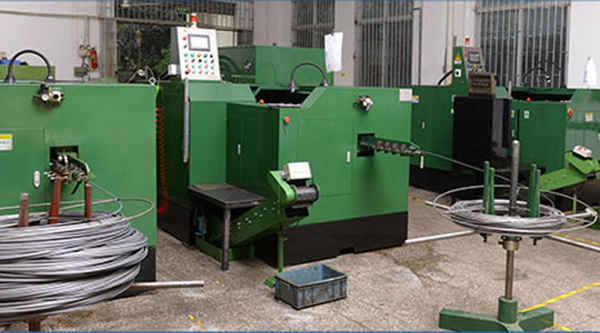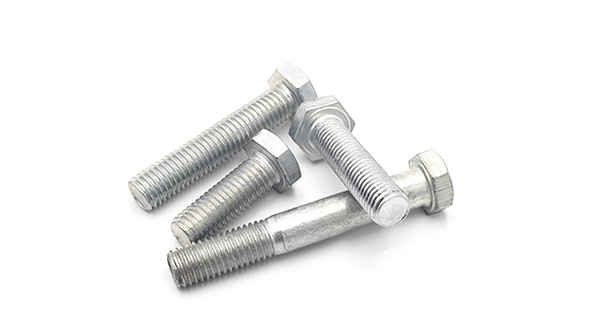What is the tolerance range of precision screws?
What is the tolerance range of precision screws?
Service Hotline
+86760-8787 8587We have more than ten years of production experience in the screw industry, the main products are: JB4364 screws, high-precision expansion bolts, solid ball head cylindrical pins, blackened fine pitch hexagon nuts, hand percussion rivets GB867 aluminum dome head rivets, small edge washers ,Flat blast bolts, embossed nuts, chain bolts, nylon column isolation columns, sets of small screws and nuts, disc spring washers, anti-skid pads, bolts with intermediate screws, extended machine bolts and other fasteners, due to the different materials and specifications of the products. There are different prices, please contact us if necessary.


Commonly used screw materials in my country are No. 45 steel, 40Cr, ammoniated steel, 38CrMOAl, superalloy, etc. 1) No. 45 steel is cheap and has good processing performance, but poor wear resistance and corrosion resistance. Heat treatment: quenched and tempered HB220-270, high-frequency quenched HRC45--48. 2) The performance of 40Cr is better than that of No. 45 steel, but it is often plated with a layer of chromium to improve its corrosion resistance and wear resistance. However, the requirements for the chrome plating layer are relatively high. If the plating layer is too thin, it is easy to wear, and if it is too thick, it is easy to peel off. After peeling off, it will accelerate the corrosion, and it has been rarely used. Heat treatment: quenched and tempered HB220—270, hard chrome plated HRC>553) nitrided steel, 38CrMoAl have excellent comprehensive properties and are widely used. Generally, the nitride layer reaches 0.4-0.6 mm. However, this material has low resistance to hydrogen chloride corrosion and is relatively expensive. 4) The superalloy material is superior to other materials. This material does not need coating, and is mainly used for the raw halogen-free screw of injection molding machine. The material has high oxidation resistance and corrosion resistance.

The key connection is a typical mechanical connection, which is usually used to connect the parts on the shaft and to fix them circumferentially and realize torque transmission. Key connection can be divided into flat key connection, semicircular key connection, wedge key connection and tangential key connection, among which flat key connection is widely used in practical engineering because of its simple structure, good alignment and convenient manufacturing. During operation, torque is transmitted through the contact between the sides of the key and the sides of the shaft and hub grooves. In order to ensure the transmission accuracy, the flat key structure generally adopts the transition fit. Due to its structural characteristics and working conditions, it is difficult to use ordinary mechanical tools to lift and pull out during the maintenance process. If forcibly removed, the key and the mating shaft will be destroyed.


T-bolt is a common fastener, which is mostly used where there is a T-slot on the workbench or where the connection can only be made from the side to be connected. However, it has the following problems in the actual production and processing process. 1. The T-bolt manufactured according to the current GB37-88 is used in conjunction with the T-slot on the worktable, which is easy to damage the T-slot on the worktable. 2. According to the observation and investigation, it is found that 90% of the damage to the T-bolt manufactured by GB37-88 is thread damage during use, and the T-shaped part is rarely damaged, resulting in a waste of raw materials. SUMMARY OF THE INVENTION The purpose of the present invention is to solve the problem that the current composite T-bolt is easy to damage other equipment and cause waste of raw materials in the actual use process, and to provide a simple structure, easy to use, safe and reliable, and not easy to damage other equipment. , thereby saving raw materials and other advantages of composite T-bolts. In order to achieve the above purpose, the present invention adopts the following technical scheme: a composite T-bolt, which includes a bolt, and one end of the bolt is connected with the T-shaped block cockroach. The T-shaped block is provided with a tapered hole, and the connection between the bolt and the T-shaped block is a cone, which is matched with the tapered hole. The utility model combines the two parts of the T-shaped block and the threaded bolt through the T-shaped block and the taper hole and the cone on the bolt to automatically lock the two parts before use. When the threaded part of the bolt is damaged, only the threaded bolt needs to be replaced. That's it. Compared with the domestic T-shaped bolts currently produced in the manufacturing process, the utility model solves the problems of complicated manufacturing processes and waste of raw materials. It is well known that the manufacture of T-bolts requires processing such as forging, turning, milling, and heat treatment. Since the composite T-bolt is used in combination with the T-block and the bolt, and the T-block is rarely damaged, after purchasing or manufacturing the T-block once, you only need to purchase or manufacture the bolt in the future. Compared with the T-bolts currently produced in China, the composite T-bolts can better protect the T-slots on the working surface. Because the T-bolt currently produced in China will rotate a certain angle around the axis of the T-bolt when fixing the object, the T-bolt will rotate at a certain angle, thereby reducing the contact between the T-bolt T-shaped surface and the T-slot stress surface of the working face. surface, causing stress concentration on this surface. The composite T-bolt avoids the above problems due to the increase of the guide surface, thereby protecting the T-slot. The beneficial effects of the utility model are: 1. Saving raw materials. 2. Reduce processing costs. 3. Simplify the technological process. 4. Protect the T-slot.

The conventional auger bit structure 1 includes a rod body 11, a screw head 12 provided on one end of the rod body 11, a drill tail 13 provided on the other end of the rod body 11, and a plurality of threads 14 arranged around the rod body 11; Wherein, the periphery of the drill tail 13 defines a parting line 15, and the parting line 15 makes the drill tail 13 symmetrically divided into a side 131 and a side 132, and a cutting end 133 is formed at the junction of the end of the side 131 and the end of the side 132, respectively. The cutting end 133 is concavely provided with a quarter-turn chip flute 134 in the same direction of the helix, and the edge 132 continues the chip flute 134 and has a quarter-turn chip flute 135 with different helical curvatures. , by connecting the chip groove 134 and the chip groove 135 through different helical curvatures, the drill tail 13 can form a symmetrical and complete chip groove of 189 degrees.

The above content is uploaded by Yueluo or the Internet. If there is any copyright issue, please contact [email protected].

What is the tolerance range of precision screws?

How to choose the right stainless steel screw manufacturer?

Why is there an R angle under the head of the hexagon head s...

We have more than ten years of experience in screw industry ...

We have more than ten years of production experience in the ...

We have more than ten years of production experience in the ...

We have more than ten years of production experience in the ...